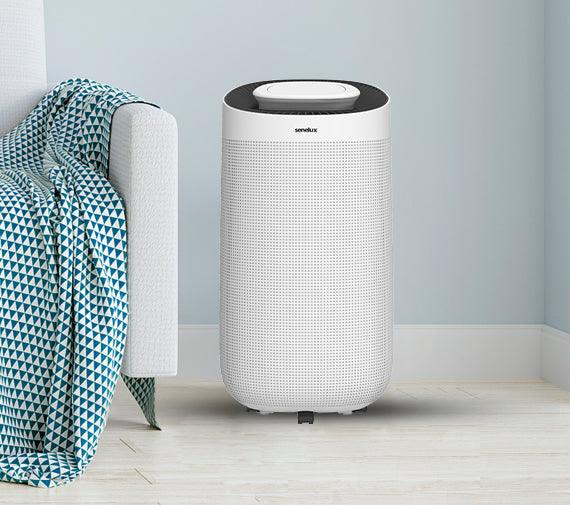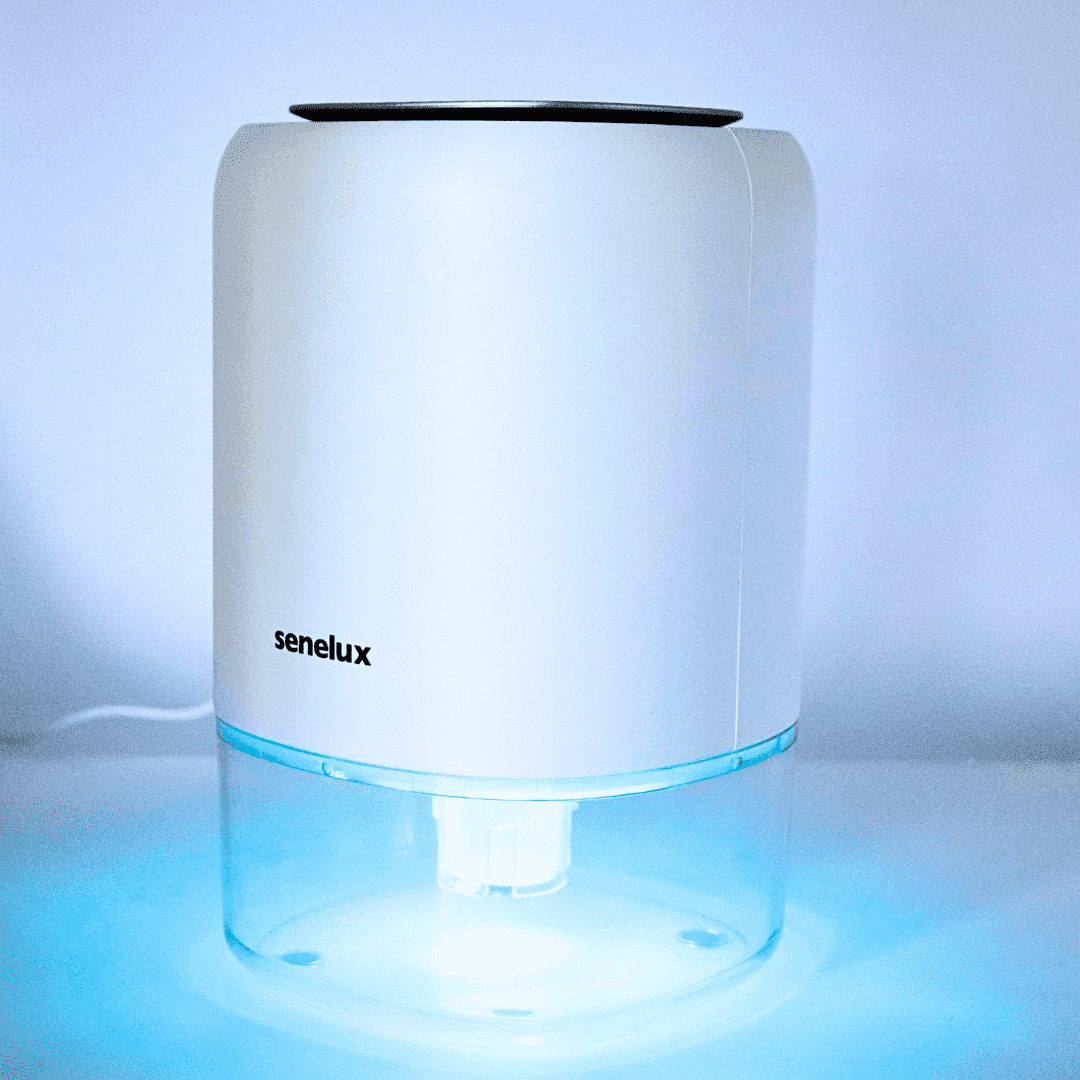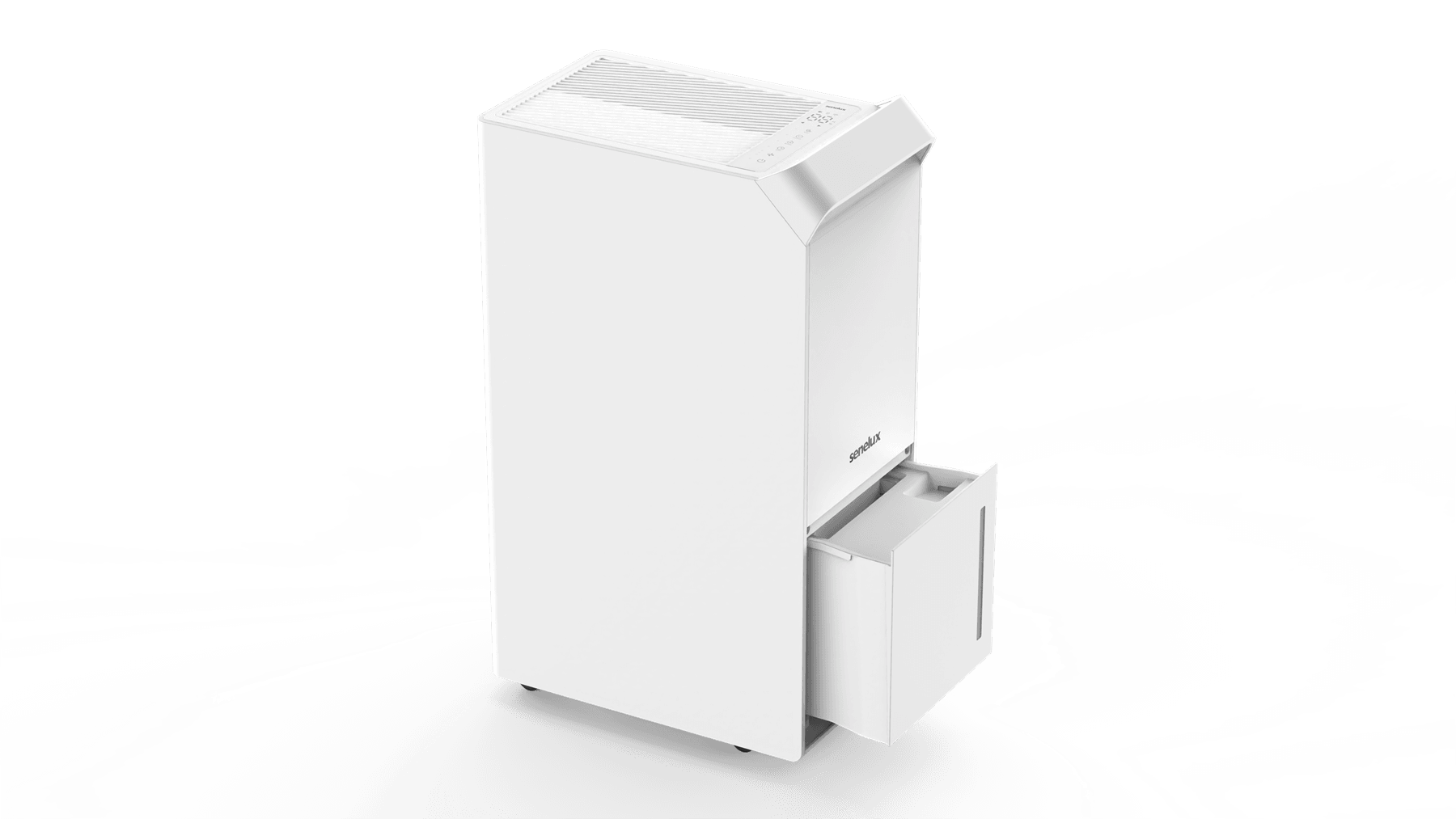At Senelux, our team of experts are constantly on the lookout for ways to save you money on your home and appliances. Today, we're taking an in-depth look into how you can make the most out of your dehumidifier; energy saving tips, safety tips and ways to maximise the efficiency of running your dehumidifier. In this article, we're going to cover everything you need to know from the basics to more advanced knowledge to get you as dehumidifier-literate as possible.
First thing's first and that's ensuring you have the correct size of dehumidifier for your space. This is perhaps the most basic knowledge, but can be deceivingly difficult for newcomers to the world of dehumidifiers. Essentially, what this translates to is: "the bigger the space, the bigger the dehumidifier needed." Sounds simple enough, but deciding which dehumidifier to buy can be more nuanced. It isn't simply a case of size, but capacity. Capacity usually goes hand in hand with size, but not always and we're here to help you decide what capacity you'll need in your dehumidifier. When looking into size and capacity, always inspect the the size of the water tank (sometimes referred to as reservoir) before committing to a new dehumidifier. In an ideal world, this will be listed in the title of the dehumidifier such as on our website where we mention the tank capacity in millilitres and litres. If you use a different measurement system, to find out the capacity of your dehumidifier's tank, you can easily use google converter which- in our experience- does the job just fine. Either way, the effect is the same- the larger the room, the larger the tank/reservoir/capacity you'll need in your dehumidifier.
The next thing to look out for is humidity levels. This is actually much easier than you'd think, however is an important step to your dehumidifying. To check the humidity levels of your rooms, you can buy a humidity sensor which usually comes equipped with a temperature gauge as well (not always though.) Once you have your sensor, examine the room/rooms you want to put your dehumidifier in. The recommended humidity levels for a room are anywhere between 30-50%. It's no secret that humans need a bit of water to keep going and dropping your room's humidity levels beneath 30% can have some pretty nasty side effects on your health including:
- Irritated Eyes
- Respiratory Problems
- Or Dry Skin
To combat these, make sure that you definitely need a dehumidifier and ensure that you're placing your dehumidifier in rooms that exceed 50% moisture levels.
The next tip- and one that doesn't get as much coverage as it should- is that you shouldn't place or lean your dehumidifier against walls. This one is fairly unusual, however we're looking to make sure you get the most out of your dehumidifier, so we're going to cover the "whys" of this point now. Firstly, dehumidifiers drain water from the air in a room. This is the primary use of a dehumidifier and is your first line of defence against mould and damp which can occur in walls. Despite this, dehumidifiers use a variety of vents- both to absorb moisture and also to vent heat from running such a device. For this, the vent ways need to be clear of any potential blockages; even if you're just looking to take moisture out of a wall. Our recommendation? Always try to keep your dehumidifier in as open a space as possible- at least 20 centimetres away from a wall. This is a sure fire way to make sure that you're optimising the efficacy of the dehumidifier that you are using and getting the most out of your operating times. The trick is; keep your dehumidifier running in areas with good air circulation. Don't clutter the area around your dehumidifier and potentially block the appliance from operating.
In the U.K, the weather can be unpredictable and, depending on where in the U.K you live, can change incredibly quickly and without warning. For this we can try to depend on weather reports, although these too can be unpredictable. Luckily if you've followed our first step (and have a temperature gauge) you can follow along with our next step. Ensure that you aren't operating your dehumidifier in extreme or "outside-of-optimal" temperatures. The reason for this is very simple. Your dehumidifier is designed to absorb moisture from the air. If that moisture is already hot (during warm weather-) that water is going to heat up the internal components of your dehumidifier. Alternately, during weather that's too cold- the water your dehumidifier drains from the air could be in danger of slowing down the internal workings of your dehumidifier. This is generally something that you'll just have to get a "feel" for- although, if you've ever viewed a Senelux dehumidifier on our website, you'll see that we also list the specific temperature that is optimal for running our dehumidifiers. You can see that in effect by clicking here.
Finally, a neat little trick for you to really optimise your dehumidifier operation- that could end up saving you a lot of money on your energy bills. Did you know that almost any appliance can save you money and operate with increased efficacy simply by plugging whatever electrical appliance you have directly into the mains? Well, it's true. Extension cords can end up costing you more in your energy bills simply by reducing the efficacy of all plugged devices. This is no different with dehumidifiers which increase in efficacy exponentially when plugged directly into a wall plug socket.
And that is all the tips and tricks we can think of outside of the usual operation tips and advice you'll see with your dehumidifiers. Obviously, emptying the tank regularly and clearing filters are essential (try to clear those filters at least once every six months) however we really hope we've given you plenty to get to grips with on your crusade against damp, mould, dust and sodden laundry. An extra tip (consider this a freebee) is to examine user reviews of any dehumidifier you're looking to buy. If you've bought from us before, you'll notice that we have now added reviews to our website so that you can examine exactly what you buy and see which of our products is right for you.


